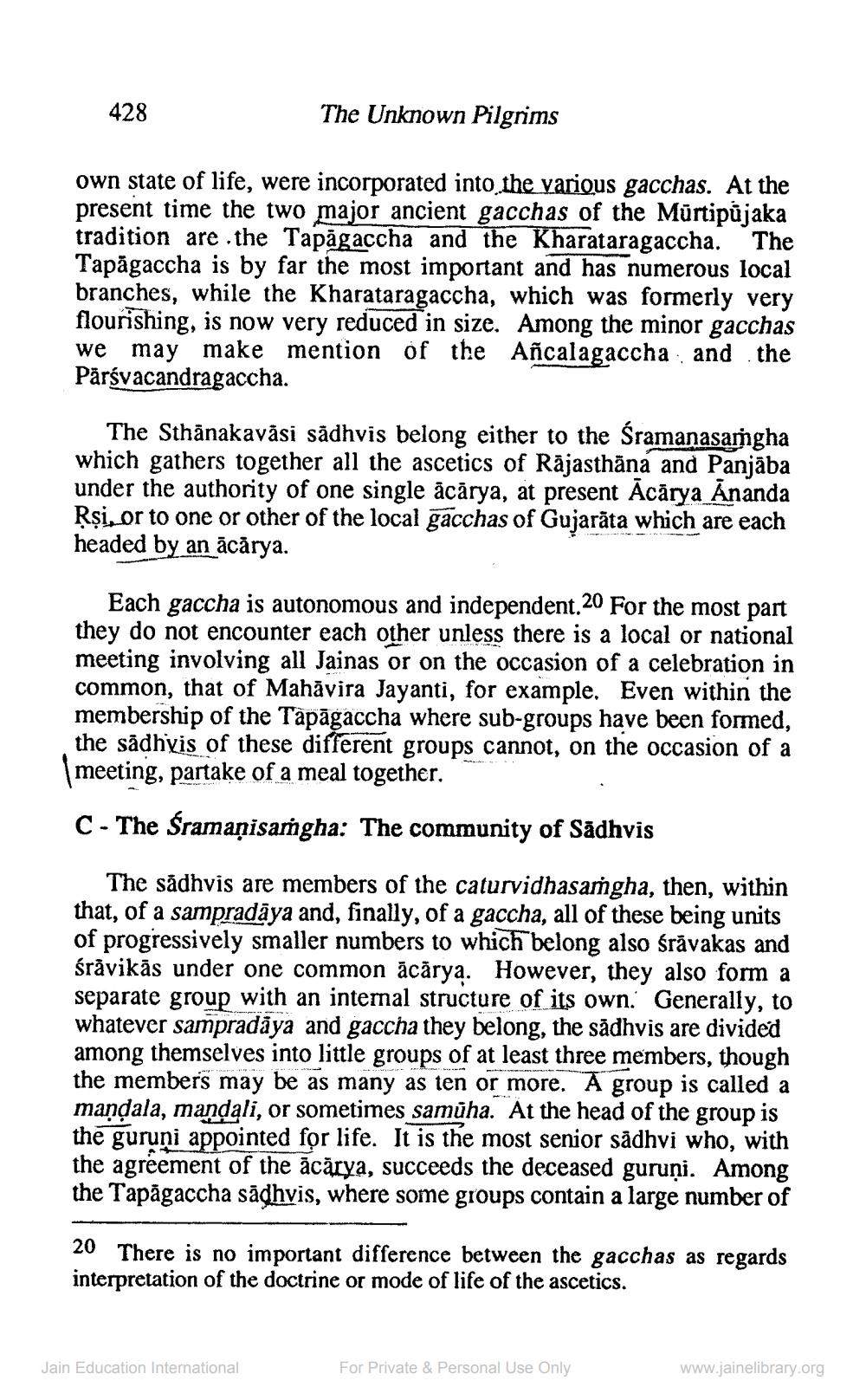________________
428
The Unknown Pilgrims
own state of life, were incorporated into the various gacchas. At the present time the two major ancient gacchas of the Mürtipujaka tradition are the Tapāgaccha and the Kharataragaccha. The Tapăgaccha is by far the most important and has numerous local branches, while the Kharataragaccha, which was formerly very flourishing, is now very reduced in size. Among the minor gacchas we may make mention of the Añcalagaccha: and the Pärývacandragaccha.
The Sthānakavāsi sādhvis belong either to the Śramanasamgha which gathers together all the ascetics of Rājasthāna and Panjāba under the authority of one single ācārya, at present Ācārya Ananda Rși, or to one or other of the local gacchas of Gujarāta which are each headed by an ācārya.
Each gaccha is autonomous and independent.20 For the most part they do not encounter each other unless there is a local or national meeting involving all Jainas or on the occasion of a celebration in common, that of Mahăvira Jayanti, for example. Even within the membership of the Tàpāgaccha where sub-groups have been formed, the sădhxis of these different groups cannot, on the occasion of a meeting, partake of a meal together.
C - The Sramaņisargha: The community of Sāhvis
The sădhvis are members of the caturvidhasaṁgha, then, within that, of a sampradāya and, finally, of a gaccha, all of these being units of progressively smaller numbers to which belong also śrävakas and śrávikās under one common ācārya. However, they also form a separate group with an internal structure of its own. Generally, to whatever sampradaya and gaccha they belong, the sădhvis are divided among themselves into little groups of at least three members, though the members may be as many as ten or more. A group is called a mandala, mandali, or sometimes samüha. At the head of the group is the guruni appointed for life. It is the most senior sådhvi who, with the agreement of the acārya, succeeds the deceased guruņi. Among the Tapāgaccha sādhvis, where some groups contain a large number of
20 There is no important difference between the gacchas as regards interpretation of the doctrine or mode of life of the ascetics.
Jain Education International
For Private & Personal Use Only
www.jainelibrary.org




